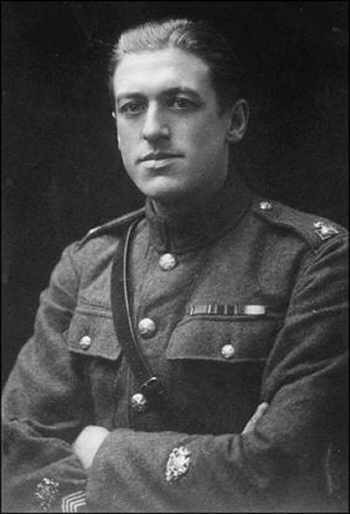
Staff Sergeant Percy John Smith, MiD
10th Battalion, Royal Fusiliers (Army
Intelligence Corps)

1914 Star with clasp
Chief Detective Inspector P. J. Smith,
Scotland Yard, late Royal Fusiliers and Army Intelligence
Corps, one of the so-called 'Hush-Hush Brigade'
1914 Star, with clasp (R-F-14814 Sjt., R. Fus.); British
War and Victory Medals, with M.I.D. oak leaf (GS-14814
A.W.O. Cl.1, R. Fus.); Coronation 1911, Metropolitan
Police (P.C.); Jubilee 1935; Army Meritorious Service
Medal, G.V.R., 1st issue (14314 Sjt.-A.C.S. Mjr., 10/R.
Fus.); The Royal Victorian Medal, Silver, G.V.R.
R.V.M. (Silver) awarded 1 November 1915: 'Percy John
Smith, Sgt., Intelligence Corps (Police)', one of eighteen
such silver awards given on the occasion of the King's
visit to the Army in the Field.
M.S.M. London Gazette 18 January 1919. This award also
appears in Police Orders dated 11 February 1919, in
which Smith is described as 'now serving as Sjt. Major,
attached the Intelligence Corps'.
Percy John Smith was born at St Peter
Port, on the Island of Guernsey, on 28 November 1886,
and left there in 1909 to join the Metropolitan Police.
After two years on the Beat he was transferred to the
Criminal Investigation Department at Scotland Yard.
Here started the foundation of a career which would
accelerate him to the front of major 'Confidence Trickster'
investigations and senior rank at Scotland Yard. However,
on the outbreak of hostilities in 1914, his police career
was temporarily curtailed. Percy Smith was selected
for Army Intelligence and was posted to the 10th Battalion,
Royal Fusiliers. This regimental assignment was merely
a paper front to disguise the true identity of the 'Hush-Hush
Brigade' as they became known by their police colleagues.
'I was hastily equipped with a uniform at Hounslow
Barracks, attested as a soldier, and given the rank
of staff-sergeant in the 10th Battalion, Royal Fusiliers.
My arms consisted of a large Webley revolver and twenty-five
rounds of ammunition. A large tin of bully, about five
pounds of cheese, and some hard biscuits were then pressed
upon me, and I made my way to Southampton, where I embarked
with hundreds of other soldiers in a coal steamer that
had been hurriedly converted into a military transport.'
He landed at Le Havre and was to be employed in counter-espionage
and security for the next four and a half years. On
three occasions he was attached to the staff of King
George V when the monarch visited the Western Front,
being rewarded with the Royal Victorian Medal in silver.
On returning to the Metropolitan Police in 1919, Smith
pursued his earlier interests at C.I.D., but later that
year he was sent back to France, in his civilian capacity
as a Detective Sergeant, to investigate the wholesale
pilfering of army supplies. He returned to Scotland
Yard in 1920 where he was posted to the newly formed
Fraud Squad.
In these post-war years, Smith campaigned very successfully
against the con-men of the day and put an end to several
hundred attempted frauds. Whatever their skills - and
these ranged from false Stock Exchange operations to
the gigolos who specialised in fleecing women, Smith
proved a relentless Detective. After many years work
he was able to compile a 'Who's Who' of con men and
this unique source of information was later published
for use by police forces world wide. It was a positive
'rogues gallery' which contained photographs, descriptions
and case histories of the hundreds of criminals who
had made the mistake of crossing his path.
Smith retired in 1935, due to ill health, as a 1st Class
Detective Inspector with 24 commendations on his record
sheet. In 1938 he published Con Man, the first of two
books which detailed his fascinating career at Scotland
Yard. The second of these, Plutocrats of Crime, was
published in 1960.
During the Second World War, in his role
of Deputy Chief Enforcement Officer for the whole of
London and the South-East of England, Smith hunted a
different group of offenders - the black marketeers.
His efforts met with no less success than in previous
years at Scotland Yard, although he later confessed
that such work was 'less exhilarating' than matching
his wits against 'some of the coolest brains in the
world'. He retired from the Ministry of Food at the
end of 1951 and, despite poor health, lived until 1967
when he died at the age of 80.